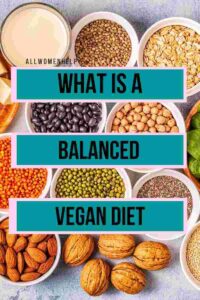
Protein is a vital nutrient in a healthy vegan diet. You can get it from plant-based foods like nuts, seeds, and whole grains. You can also find additional protein in hemp, chia, and flax seed. They are high in protein, essential fat acids, and anti-inflammatory phytonutrients. They are also rich in fiber and antioxidant properties. Walnuts and almonds are great sources of nutrients and high levels of omega-3 fat acids. Pecans and brazilnuts also provide high levels of magnesium, vitamin A, and zinc.
Protein
A vegan diet plan will have lower protein intakes than a normal American diet. High protein diets are not necessarily a bad thing. But, they can increase your risk for osteoporosis or kidney disease. Consider including other foods in the diet to increase your protein intake.
Calcium
When you eat vegan, it is important to get enough calcium. Many foods have been fortified in calcium to ensure that you are getting the right amount. Fortified yogurt, which comes in 100g, provides sufficient calcium. You can also get 80g of fruits, nuts, or seeds. One teaspoon. of dried herb in your diet.

Whole grains
Whole grains are an essential part any vegan diet plan. They contain numerous important nutrients. Whole grains are great for salads, breads, and baked goods. They can also be used as the base for a curry, stir fry or other dish.
Water
A healthy vegan diet should include enough water. You have many benefits from water, including the ability to lower your risk of developing diabetes or kidney stones. It can help reduce the risk for urinary tract infections, as well as dental disease. Increasing your fluid intake is also important for people who are transitioning to a vegan diet. Fiber can cause some digestive issues, so it is important to drink enough fluid to compensate.
Saturated fats
Saturated fats can be described as a group of fatty acid that is found primarily in animal products. However, they can also be found in foods. These fats are linked with cardiovascular disease. Consuming too many of them can cause serious health problems. The American Heart Association has lowered the recommended daily intake of saturated fat to less than five to six percent of your total calorie intake. A healthy vegan diet should not contain more than one third of your daily calories from saturated oil, which is lower than what is recommended for animal products.
Vegetables
Vegetables are an essential part of a healthy vegan diet. They are high in vitamins as well as fiber which may lower your chance of getting certain cancers. Vegetables are an excellent source for fiber that helps maintain regular bowel movements. Vegetables are also easier to digest than animal product. Vegetables are an excellent option if you're trying lose weight.

Legumes
Legumes are an excellent plant-based food. Legumes are a great source of fiber and protein. As a side or main course, you can include them in your meal plans. These can also be used in desserts.
WSLF diet
The WSLF diet has become quite popular with YouTube and Instagram celebs such as Alex and Kristin MacDowell. It is based upon leafy greens and starchy vegetables as well as whole grains. You can also get healthy fats from avocados, nuts, seeds and avocados.
FAQ
What is the difference between sugar and fat?
Fat is an energy source that comes from food. Sugar is a sweetener found in fruits, vegetables, and other foods. Both sugars, and fats, have the same calories. But fats are twice as calories as sugars.
The body stores fats and they can lead to obesity. They can lead to cholesterol buildup in the arteries, which could cause heart attacks or strokes.
Sugars are quickly absorbed by the body and provide instant energy. This causes blood glucose levels to rise. High blood glucose levels can lead to type II diabetes.
How much should I weigh for my height and age? BMI calculator & chart
A body mass index calculator (BMI) is the best way to find out how much weight you should lose. A healthy BMI range lies between 18.5 and 24,000. Weight loss is possible if you aim to lose approximately 10 pounds per week. To calculate your BMI, simply enter your height and weight into the BMI calculator.
This BMI chart will help you determine if your body is overweight or obese.
Exercise: Good and bad for immunity?
Exercise is good to your immune system. Exercise boosts the production of white blood cells in your body that fight infections. You can also eliminate toxins from the body. Exercise can help you avoid heart disease and other illnesses like cancer. It reduces stress.
Exercising too frequently can make your immune system weaker. When you exercise too hard, your muscles will become sore. This causes inflammation and swelling. In order to fight off infection, your body must produce more antibodies. This can lead to allergic reactions and other autoimmune disorders.
So, don't overdo it!
What are 10 healthy behaviors?
-
Eat breakfast every day.
-
Don't skip meals.
-
Eat a balanced, healthy diet.
-
Drink lots of water.
-
Take care of your body.
-
Get enough sleep.
-
Avoid junk food.
-
Daily exercise
-
Have fun
-
Find new friends
Does being cold give you a weak immune system?
Cold causes a decrease in immune system strength. This is because white blood cells are less effective at fighting infection. But, cold makes you feel better. Your brain releases endorphins that reduce pain.
Statistics
- This article received 11 testimonials and 86% of readers who voted found it helpful, earning it our reader-approved status. (wikihow.com)
- WHO recommends consuming less than 5% of total energy intake for additional health benefits. (who.int)
- In both adults and children, the intake of free sugars should be reduced to less than 10% of total energy intake. (who.int)
- According to the 2020 Dietary Guidelines for Americans, a balanced diet high in fruits and vegetables, lean protein, low-fat dairy and whole grains is needed for optimal energy. (mayoclinichealthsystem.org)
External Links
How To
What does the meaning of "vitamin?"
Vitamins are organic substances found naturally in food. Vitamins help us absorb nutrients in the foods we consume. Vitamins cannot come from the body so food must provide them.
There are two types: water-soluble and fat-soluble vitamins. Water soluble vitamins dissolve easily in water. Vitamin C,B1(thiamine), B2 (2riboflavin), and B3 (3niacin), as well as vitamin C,B1, B2 (riboflavin), and B3 (niacin), vitamin B6 (pyridoxine), vitamin folic acid (biotin), pantothenic, and choline are examples. The liver and fat soluble vitamins are stored in fatty tissue. You can find vitamin D, E K, A and beta carotene as examples.
Vitamins are classified according their biological activity. There are eight major groups of vitamins:
-
A - Vital for healthy growth.
-
C - vital for nerve function and energy generation
-
D - Vital for healthy bones and teeth
-
E - Required for good vision, reproduction.
-
K – Required for healthy muscles & nerves.
-
P - Vital for strong bones and teeth.
-
Q – aids digestion and absorption.
-
R is required for the production of red blood cells.
The recommended daily intake (RDA), of vitamins varies with age, gender and physical conditions. The U.S. Food and Drug Administration has established the RDA values.
For adults 19 years and over, the RDA vitamin A intake is 400mg/day. Because it is essential for the development of the fetus, pregnant women should consume 600 micrograms per days. Children ages 1-8 require 900 micrograms per day. Children under 1 year old require 700 micrograms daily, while infants over one year old need 500 micrograms every day. This decreases between 9 and 12 months.
Children aged 1-18 years need 800 micrograms daily, while children overweight require 1000 micrograms per days. Children who are severely obese or underweight will need 1200 micrograms each day.
Children 4-8 years old with anemia will need 2200 mg of vitamin D daily.
2000 micrograms per person is necessary for general health. Women who are pregnant or breastfeeding need 3000 micrograms per day due to increased nutrient requirements.
1500 micrograms is the recommended daily intake for adults aged 70+, as they lose 10% of their muscle every ten years.
Women who are pregnant or nursing need more than the RDA. Pregnant women need 4000 micrograms per dayduring pregnancy and 2500 micrograms per day after delivery. Breastfeeding mothers need 5000 mg per day when breastmilk is being produced.